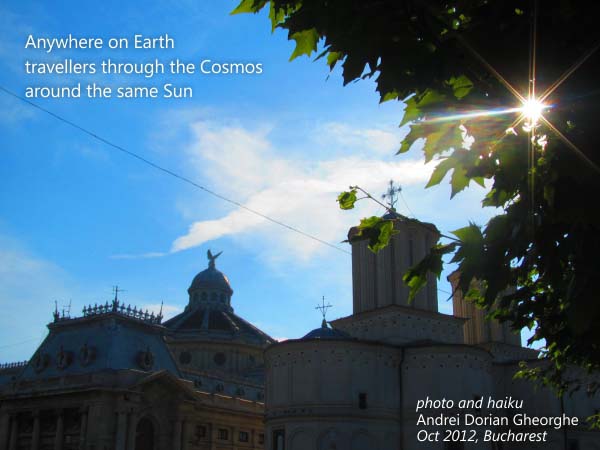by Andrei Dorian Gheorghe, Romania
- Published: Tuesday, April 02 2013 07:08

Before starting an expedition to other continents, in October 2012 I meditated a little on the Mitropoly Hill in Bucharest, probably the most important place in Romanian history, which includes the current Patriarchal Cathedral (created in the 1650s by Constantin Serban) and a few ulterior buildings.
This hill was assaulted in 1859 by over 30,000 people who asked for the union between Wallachia (or the Romanian Land) and Moldavia, which was followed by the union with Transylvania and other Romanian historical provinces in 1918.
Also on the Mitropoly Hill, the Romanian politicians voted in 1877 the total independence from the Ottoman Empire.
I think it is important to add that, through the military resistance led by Mircea cel Batran “the Old,” Vlad Tepes Dracula, Stefan cel Mare “the Great,” Mihai Viteazul “the Brave” and others, the Romanian states in the Middle Age forced the Ottoman Empire to not transform them into “pashaliks”—except for a few years in a few centuries—but to accept them as buffer and tributary states. Some historians consider that, if the Romanian states had become “pashaliks,” logically the Ottomans would have had a better chance of advancing to the north—and even to the west—of Europe.
Seeing the Sun through the foliage of a tree on the Mitropoly Hill, I felt myself inspired to try to work for this series, “LATITUDINAL SUN,” which I dedicate to Global Astronomy Month 2013.
My special gratitude to:
-Felician Ursache, for his support during the expedition which represented the theme of this mini-project;
-Valentin Grigore, for his advice;
-and Alexandru Sebastian Grigore, who created the design for my works.
With all best wishes,
Andrei Dorian Gheorghe
###








Comments